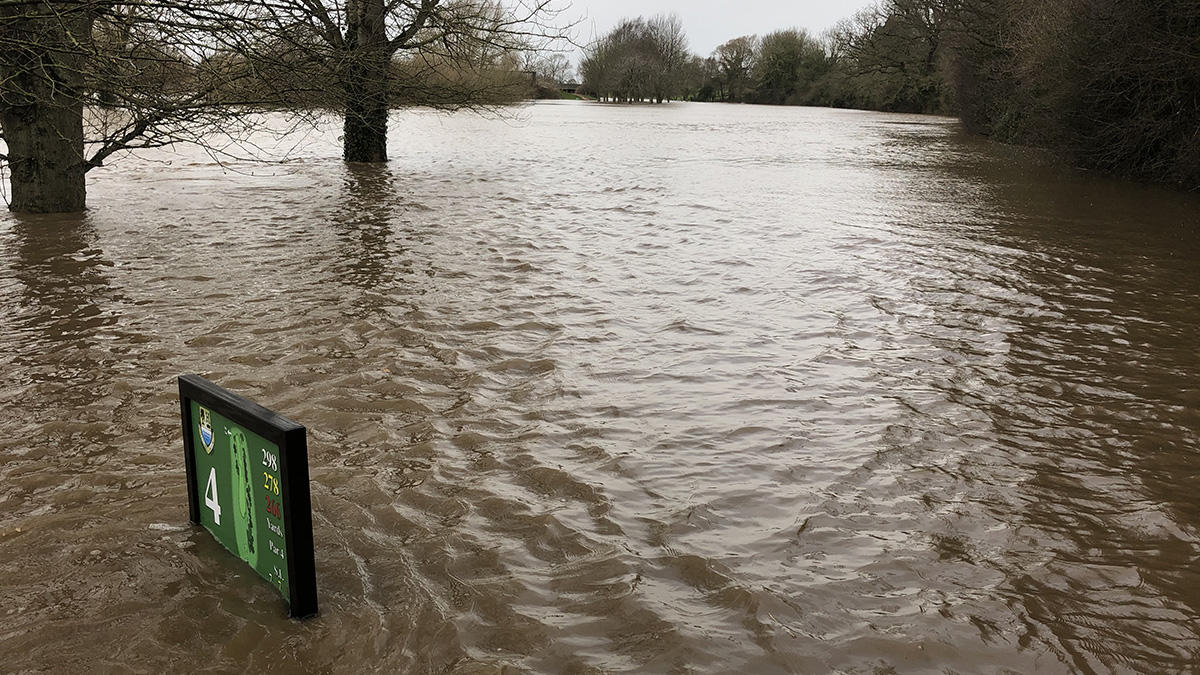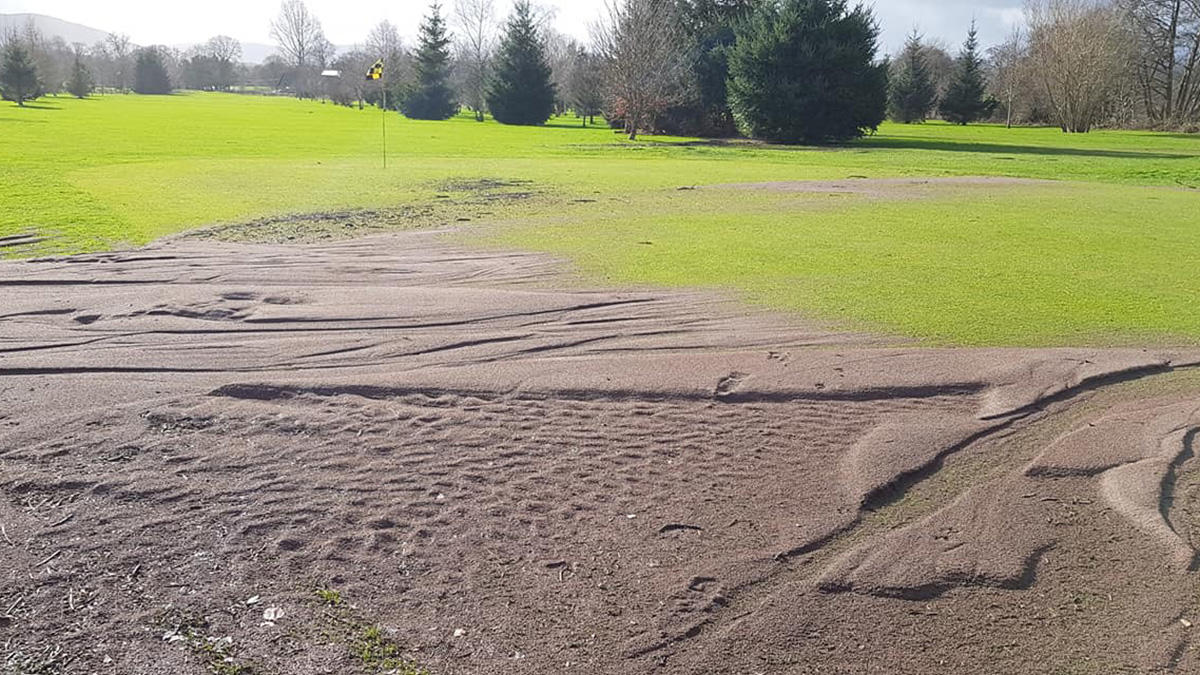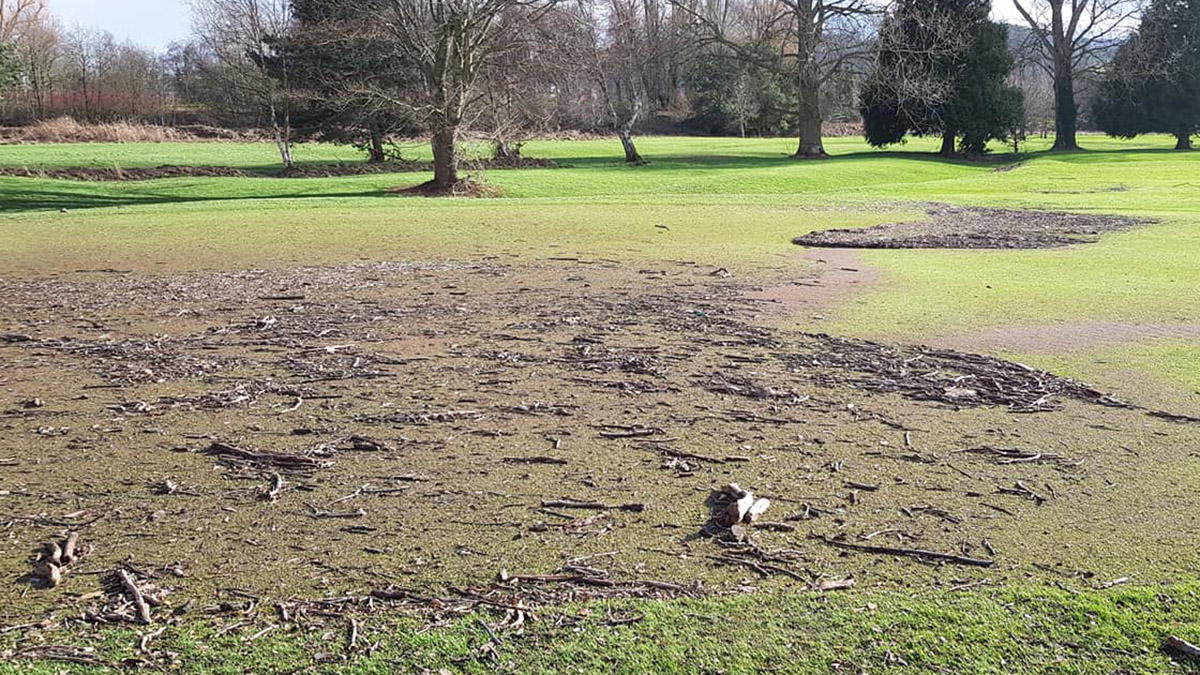- Homepage
- News and Features
- What happens when your golf course floods?
What happens when your golf course floods?
Water is the most essential ingredient of golf course preparation. Without it the turf won’t grow and yet, too much can have catastrophic consequences.
In a year that’s seen record wildfires ravaging Australia, in the UK the winter has been one characterised by seemingly nonstop rain.
In his regular weather blog, Headland Amenity’s Mark Hunt identified how the last 5 ½ months have recorded an average of 81% wet days.
“Try maintaining a sports surface and keeping punters’ expectations happy on those stats! But try we do,” wrote Mark.
Storm Ciara was dubbed “the biggest storm this century” by the Met Office and was quickly followed by Storm Dennis, bringing further high winds and torrential rain.
Ciara brought hit the north west of England and north Wales hardest, bringing almost 180mm of rain to Honister Pass in Cumbria, while just a week later Dennis dumped an addition 158mm of rainfall on south Wales.

The fourth hole at Aldwark Manor was completely submerged
Heavily saturated ground was topped up and quickly flooded once again. For golf courses all over the country, this meant entire holes were submerged and the clubs have been left counting the cost of the recovery operation.
At Mond Valley above the River Tawe in Wales, the golf club revealed it would close ‘indefinitely’ while the clean-up operation got underway.
At nearby Brecon Golf Club, Stuart Ross is the only full-time member of the greenkeeping team at the 118-year-old nine-hole venue.The James Braid-designed course sits beside the River Usk in an area that was heavily hit by Storm Dennis, with further flood warnings on the way.
Four of the nine holes were submerged under three feet of water and when the flooding subsided, the course was buried beneath a layer of silt and debris.
“There’s not really a lot we can do to prevent this,” said Stuart. We could do some work and build up the banking around the greens, but it came over so bad this time that I don’t think a bank would have stopped anything.
“It’s concerning to a degree, but there’s absolutely nothing we can do about it and so we just have to crack on.”

A thick layer of silt and sand has covered many playing surfaces
When submerged by water, the turf has no access to oxygen, suffocating it. If trapped underwater for more than a week, the grass will essentially drown. If it does, the time it takes for the course to recover and the costs involved with be huge.
When the water drains away, flooding such as that caused by this winter’s storms will also leave behind a large amount of debris, including silt, sand and tree branches.
This thick layer can act in the same way as the water, cutting off the turf’s access to oxygen and suffocating it further.
Greenkeepers must scrape this debris off using the tools available to them and for Stuart at Brecon, this means scraping up the mud using snow shovels and carrying it away in wheelbarrows. It’s time-consuming work, said Stuart, who explained: “I removed the top layer on our smallest green and it took me all day. I’ve got to go back and have another go on that green to clear the rest off, but I needed to let the grass breathe because it was being smothered.

Debris has been strewn across the Brecon greens
“I’ve been working on clearing the greens all week and I’ve managed to reinstate two greens. The only fortunate thing is that this has happened in February so we haven’t lost too many green fees and the members aren’t in a rush to play in this weather anyway.
“Two of our greens have come back pretty well already. We’ll aerate and topdress and feed and hope for the best. I haven’t sprayed a pesticide in the 10 years that I’ve been here and I’m hoping we don’t get any disease off the river as there’s a lot of farmland around and we don’t know what chemicals are in the water.
“The greens will take a while to recover and it’s setting me back on other things I would like to be doing. But at the end of the day my house is fine, my family’s fine and that’s what matters most.”
So although the water may have subsided, for the greenkeeping team the work is just beginning. Rushing to reopen the course will certainly churn saturated fairways into mud and the stressed turf is more liable to suffer from diseases and will be slower to recover.
In the 2018 USGA Greens Section article Preparing for Golf Course Flooding, agronomists Steven Kammerer and John Daniels advised: “It is important to communicate with golfers about the time needed to prepare for and recover from floods. While above-ground damage will certainly be obvious, the less apparent agronomic concerns will require more time to fully correct. Rushing to reopen a golf course to cart traffic before flooded areas are dry and fully recovered can often cause as much damage as the flood itself.”
At this important stage in the greenkeeping calendar, where resources are being diverted away from long-term projects and preparations for the upcoming playing season, towards flood recovery, it's clear the impact of this winter's wet weather will go far beyond the affected areas of the course and could be seen for some time to come.
Author

Karl Hansell
Karl has been head of communications for BIGGA since March 2016. His duties include editing the monthly Greenkeeper International magazine, in addition to other communications activities for the association.

